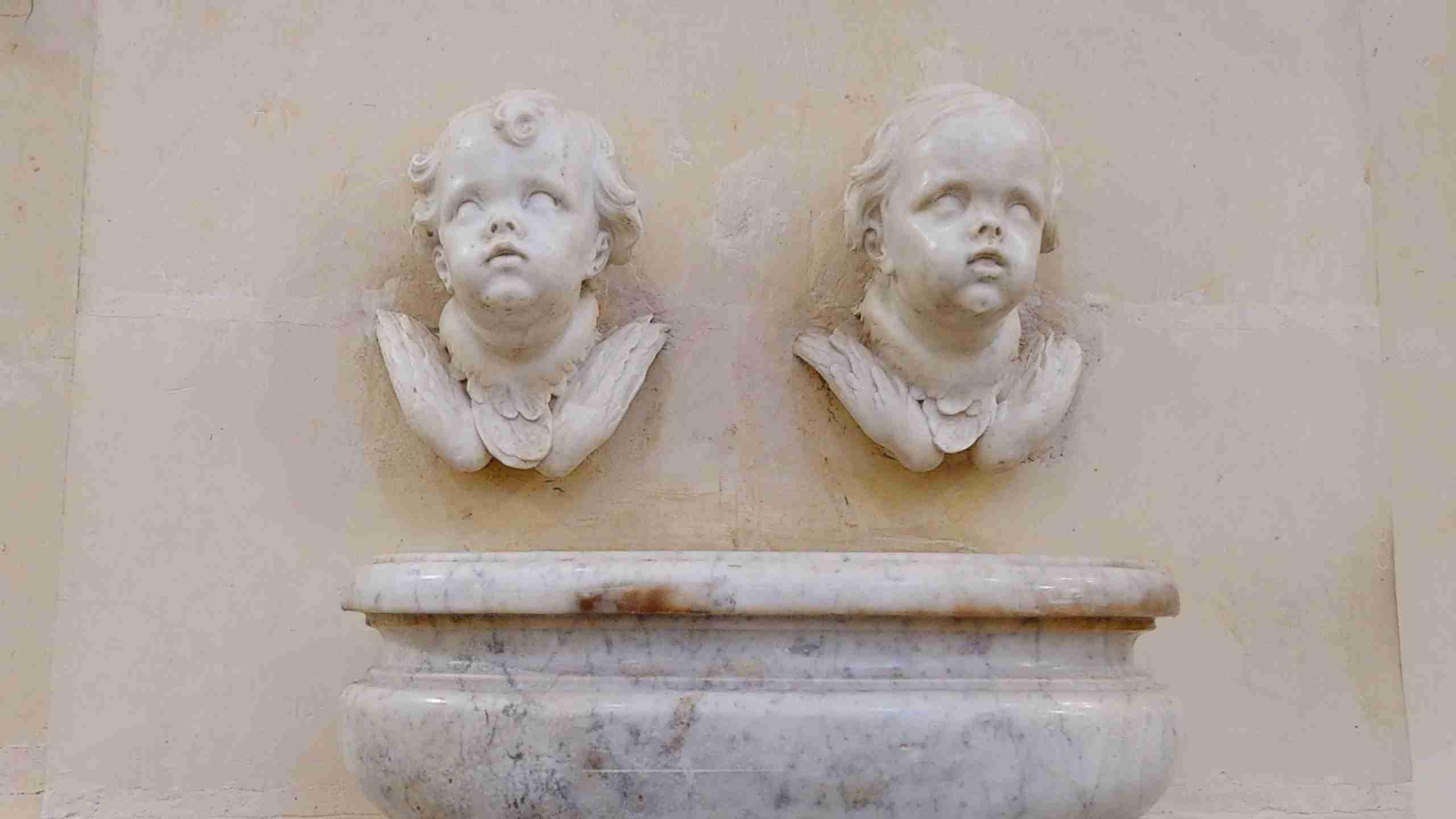
WELCOME!
to
The Parish Church of the Assumption of the Blessed Virgin Mary into Heaven
On this page you will find a number of features that will give you a good perspective and understanding of the colourful history of L-Imġarr Parish Church.

L-Imġarr Parish Church is dedicated to the Assumption of the Blessed Virgin Mary. It was constructed between 1912 and 1946 on the site of an earlier church which had existed since around 1400.
 A small church dedicated to the Assumption of Mary was established in Imġarr in around 1400, and it was repaired in 1600. The village formed part of the parish of Mosta until it became a separate parish on 12 October 1898. The old church therefore became a parish church, but residents wanted to build a new and larger church in its place. Girolamo Chetcuti, who was the parish priest at that time, organised a campaign to raise funds for the new church, and he purchased the land on which the building was constructed.
A small church dedicated to the Assumption of Mary was established in Imġarr in around 1400, and it was repaired in 1600. The village formed part of the parish of Mosta until it became a separate parish on 12 October 1898. The old church therefore became a parish church, but residents wanted to build a new and larger church in its place. Girolamo Chetcuti, who was the parish priest at that time, organised a campaign to raise funds for the new church, and he purchased the land on which the building was constructed.
The first stone of the building was laid down on 2 June 1912. The new church was constructed around the old one, which was demolished in 1918. Several masons and master builders were involved in the church’s design and construction. The initial plans were drawn up by Ġammri Camilleri, who also oversaw the roofing of the sacristy and some of the chapels together with the builder Indri Deguara. Ċensu Galea oversaw the initial stages of construction, and the plans of the dome were drawn up by Ġiomaria Camilleri and Ġanni A. Cilia. Camilleri oversaw the construction of the dome. The residents of Mġarr contributed to the church’s construction by providing labour and by selling eggs, fruit and livestock to raise funds.
When the building was still under construction, part of it was temporarily roofed over to allow Mass to be celebrated inside. Between 1933 and 1935, through the efforts of parish priest Edgar Salomone, a number of buildings were expropriated by the government and they were demolished in order to make way for a public square and a parvis in front of the church. Two bells were installed in the belfries on 1 September 1935. The almost-completed church was blessed on 13 August 1939 by Girolamo Chetcuti, but construction halted soon afterwards because of World War II. The dome’s lantern and the upper levels of the belfries were designed by Ġużeppi D’Amato, and construction of these began on 25 February 1946. The building was completed later that year.
construction, part of it was temporarily roofed over to allow Mass to be celebrated inside. Between 1933 and 1935, through the efforts of parish priest Edgar Salomone, a number of buildings were expropriated by the government and they were demolished in order to make way for a public square and a parvis in front of the church. Two bells were installed in the belfries on 1 September 1935. The almost-completed church was blessed on 13 August 1939 by Girolamo Chetcuti, but construction halted soon afterwards because of World War II. The dome’s lantern and the upper levels of the belfries were designed by Ġużeppi D’Amato, and construction of these began on 25 February 1946. The building was completed later that year.
The church has a neoclassical design which bears similarities to the Basilica Marija Assunta in Mosta, which is in turn based on the Pantheon in Rome. Contrasting with the Mosta church’s circular dome, the cupola of Mġarr church is elliptical.
The church has two bell towers and a large dome which is painted silver, and the latter dominates the village’s skyline. Internally, the church contains seven altars.
 The church’s altarpiece was painted by Lazzaro Pisani, and the building also contains a number of paintings by Ramiro and Guido Calì. Another painting of the Virgin Mary by Pisani which was located in the old church is now found in the sacristy.
The church’s altarpiece was painted by Lazzaro Pisani, and the building also contains a number of paintings by Ramiro and Guido Calì. Another painting of the Virgin Mary by Pisani which was located in the old church is now found in the sacristy.
The church’s titular statue of the Assumption of Mary was purchased from Paris, and some other statues located in the church were purchased from Rome or Lecce in Italy. The church also includes some statues made by the Gozitan sculptor Wistin Camilleri.
Mġarr
Mġarr, formerly known as Mgiarro, is a small town in the Northern Region of Malta. Mgarr is a typical rural village situated in an isolated region, west of Mosta. It is surrounded with rich farmland and vineyards. Many of its inhabitants are farmers or are engaged in some sort of agricultural activity.
History
Mġarr has two important prehistoric sites: Ta’ Ħaġrat, which is still in a good state of preservation, stands in a field near the village centre; Ta’ Skorba, excavated in 1963, lies just outside the village.
Mġarr’s history is that of a farming community patronised by various of the Mdina patrician families. Mġarr was granted by the King of Sicily to the Inguanez family, and over time they sold it to the Falsone family. Over time, land was divided and given to all descendants.
Mġarr today has grown quite large, though still considered a country town with fresh clean air away, from the major industrial towns of Malta.
Mġarr’s rustic environs embrace several rustic spots like Binġemma, Wardija, Fomm ir-Riħ, Għajn Tuffieħa and Ġnejna Bay.